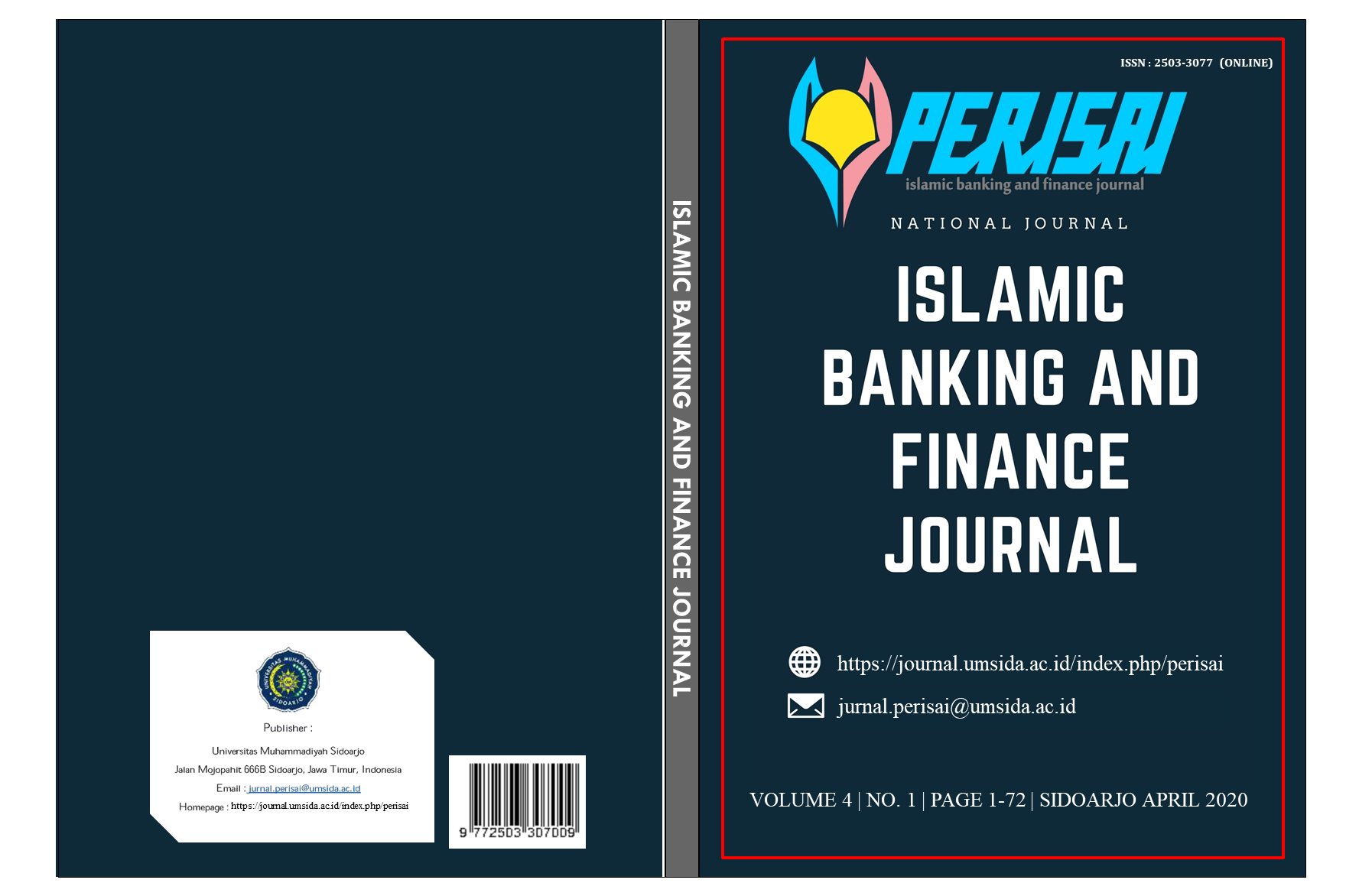Baitul Mal Wat Tamwil Architectural Map: Institutional and Regulatory Analysis
Peta Arsitektur Baitul Mal Wat Tamwil: Analisis Kelembagaan dan Regulasi
DOI:
https://doi.org/10.21070/perisai.v6i1.1583Keywords:
BMT,, Architectural Map, Literature ReviewAbstract
Bait al-maal wa al-tamwiil is a sharia microfinance concept that only exists in Indonesia. There is a uniqueness in the concept, namely the merging of social activities with commercial activities in one institution. This institution was born along with the birth of Islamic banking in Indonesia. This study collects a number of literatures to describe the architectural map of BMT in Indonesia. Currently BMTs mostly operate under Law no. 25 of 1992 concerning Cooperatives and a few others operate under the Financial Services Authority (OJK) through Law no. 1 of 2013 concerning Microfinance Institutions (MFIs). The DSN MUI fatwa which is the basis for the existence of BMT is the DSN-MUI Fatwa No. 141/DSN-MUI/VIII/2021 concerning Guidelines for the Establishment and Operation of Sharia Cooperatives.
References
Abdullah, R., & Ismail, A. G. (2014). Al-Tawhid in relation to the economic order of microfinance institutions. Humanomics, 30(4), 325–348. https://doi.org/10.1108/H-01-2014-0006
Abdullah, R., & Ismail, A. G. (2017). Taking stock of the waqf-based Islamic microfinance model. International Journal of Social Economics, 44(8), 1018–1031. https://doi.org/10.1108/IJSE-06-2015-0176
Fianto, B. A., Gan, C., & Hu, B. (2019). Financing from Islamic microfinance institutions: evidence from Indonesia. Agricultural Finance Review, 79(5), 633–645. https://doi.org/10.1108/AFR-10-2018-0091
Ismanto, K. (2015). Pengelolaan Baitul Maal Pada Baitul Maal Wa Tamwil (BMT) di Kota Pekalongan. Jurnal Penelitian, 12(1), 24. https://doi.org/10.28918/jupe.v12i1.641
Jayengsari, R., & Husaeni, U. A. (2021). The Role of Baitul Maal wa Tamwil in Alleviating Poverty in Cianjur Regency, West Java. Amwaluna: Jurnal Ekonomi Dan Keuangan Syariah, 5(1), 56–66.
Masyithoh, N. D. (2014). Analisis Normatif Undang-Undang No. 1 Tahun 2013 Tentang Lembaga Keuangan Mikro (Lkm) Atas Status Badan Hukum Dan Pengawasan Baitul Maal Wat Tamwil (Bmt). Economica: Jurnal Ekonomi Islam, 5(2), 17–36. https://doi.org/10.21580/economica.2014.5.2.768
Abdul Rahman, R., & Dean, F. (2013). Challenges and solutions in Islamic microfinance. Humanomics, 29(4), 293–306. https://doi.org/10.1108/H-06-2012-0013
Rohman, P. S., & Herianingrum, S. (2019). Baitul Mal wa Tamwil Berbasis Wakaf sebagai Solusi Permasalahan Riba. Al-Awqaf: Jurnal Wakaf Dan Ekonomi Islam, 12(2), 143–164. https://doi.org/https://doi.org/10.47411/al-awqaf.v12i2.43
Snyder, H. (2019). Literature review as a research methodology: An overview and guidelines. Journal of Business Research, 104(July), 333–339. https://doi.org/10.1016/j.jbusres.2019.07.039
Wardiwiyono, S. (2012). Internal control system for Islamic micro financing: An exploratory study of Baitul Maal wat Tamwil in the City of Yogyakarta Indonesia. International Journal of Islamic and Middle Eastern Finance and Management, 5(4), 340–352. https://doi.org/10.1108/17538391211282836
Wulandari, P. (2019). Enhancing the role of Baitul Maal in giving Qardhul Hassan financing t o the poor at the bottom of the economic pyramid: Case study of Baitul Maal wa Tamwil in Indonesia. Journal of Islamic Accounting and Business Research, 10(3), 382–391. https://doi.org/10.1108/JIABR-01-2017-0005
Wulandari, P., & Kassim, S. (2016). Issues and challenges in financing the poor: case of Baitul Maal Wa Tamwil in Indonesia. International Journal of Bank Marketing, 34(2), 216–234. https://doi.org/10.1108/IJBM-01-2015-0007
Wulandari, P., Kassim, S., Adhi Kasari Sulung, L., & Iwani Surya Putri, N. (2016). Unique aspects of the Islamic microfinance financing process. Humanomics, 32(3), 230–247. https://doi.org/10.1108/H-09-2014-0062
Zada, N., & Saba, I. (2013). The Potential Use of Qarḍ Ḥasan In Islamic Microfinance. ISRA International Journal of Islamic Finance, 5(2), 153–162. https://doi.org/10.12816/0002775
KNKS. (2019). Strategi Pengembangan Keuangan Mikro Syariah di Indonesia (B. Aryo, A. Aditya, & Y. Izharivan (eds.); Cetakan Pertama. Komite Nasional Keuangan Syariah (KNKS).
Fatwa Dewan Syariah Nasional-Majelis Ulama Indonesia No. 141/DSN-MUI/VIII/2021 tentang Pedoman Pendirian dan Operasional Koperasi Syariah
Undang-Undang No. 25 tahun 1992 tentang Perkoperasian
Undang-Undang No. 1 tahun 2013 tentang Lembaga Keuangan Mikro
https://www.hestanto.web.id/sejarah-dan-badan-hukum-baitul-mal-wat-tanwil/ (diakses pada tanggal 27 November 2021, pukul 09:47 WIB)







